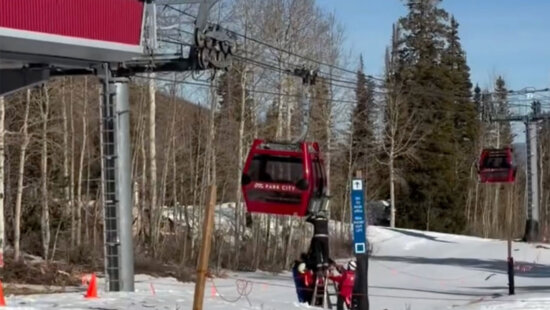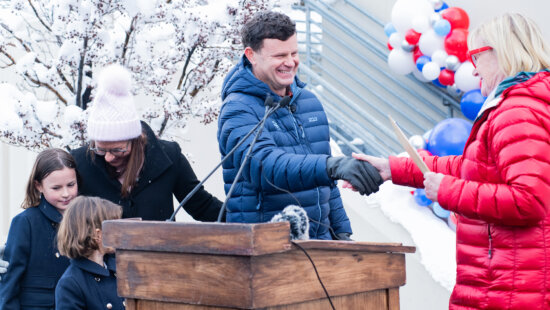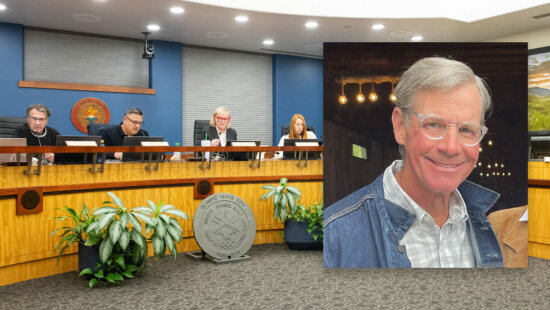News
5 groups sue Utah to save Great Salt Lake

Photo: Great Salt Lake in September 2023.
PARK CITY, Utah — Utah Physicians for a Healthy Environment, the American Bird Conservancy, the Center for Biological Diversity, the Sierra Club and the Utah Rivers Council filed a lawsuit against the state of Utah on Sept. 6, 2023. As reported by High Country News, scientists consider the minimum healthy level for the Great Salt Lake to be 4,198 feet. Even after last year’s record snowfall and the diversions of water to the Great Salt Lake, the lake is only at 4,192 feet. In the lawsuit, the five groups are asking for a declaratory judgment that the state of Utah has a trust obligation to maintain a healthy lake elevation of 4,198 feet, injunctive relief to require the state to prevent further depletion of the water level over the next two years, and for Utah to restore the lake to the minimum healthy level within 10 years.
Consequences of not limiting withdrawals from tributaries to the Great Salt Lake
A scientific report first published Jan. 4, 2023, states “The lake’s drop has accelerated since 2020, with an average deficit of 1.2 million acre-feet per year. If this loss rate continues, the lake as we know it, is on track to disappear in five years.”
Zach Frankel, executive director of the Utah Rivers Council, one of the parties to the suit, said, “The baby steps Utah has taken at the Great Salt Lake are woefully inadequate to sustain the American West’s largest wetland ecosystem and we need the state to stop ignoring the upstream water diversions that are spiraling the lake and its wildlife into oblivion.”
Changes already happening
Dr. Kevin Perry, an atmospheric scientist at the University of Utah who studies some of the implications of the shrinking Great Salt Lake, in a 2022 interview with Townlift said the Great Salt Lake is close to “the salinity tipping point, where the salt content of the southern part of the lake is so great that the brine flies and the brine shrimp have trouble reproducing, and they’re the base of the food chain. When the base of the food chain collapses, the entire ecosystem collapses and the millions of birds that depend upon this will come here and expect to be able to eat but will instead starve to death. So there are lots of different tipping points.”
As of 2023, the average number of dust storms is 15 per year.
In 2022, the snow melted 17 days earlier than in previous years due to the dust deposited in the snowpack, according to a snow hydrologist at the University of Utah.
In 2023, American white pelicans abandoned their nesting colony on Gunnison Island in the Great Salt Lake, as reported by Utah Public Radio.
Utah Legislature’s actions
In 2010 the Utah Legislature created the Great Salt Lake Advisory Council (GSLAC) with House Bill 343 to advise on the sustainable use, protection, and development of the lake.
The GSLAC commissioned reports and studies and in 2017 commissioned a study to solicit ideas from the public to maintain or increase lake levels, which resulted in 72 strategies. Of these GSLAC reviewed and ranked 18 consensus support strategies in 2019 and identified 12 that were most likely to succeed for further review. In 2020 Jacobs Engineering and Clyde Snow did a legal review to determine what is needed to implement each strategy.
They identified three foundational strategies, recognizing a right to conserved water, quantifying conserved water and shepherding water, and nine tactical, operational and overlying strategies. When asked about the water coming from Idaho before entering Utah, Steven Clyde said: “Idaho has already done much water conservation.”
The majority of the water diverted from the Great Salt Lake is used for agriculture, with only 20% being diverted for residential purposes.
The Great Salt Lake Advisory Council put together a 12-step program to save the Great Salt Lake. In 2022 the Utah legislature passed legislation needed for progressing towards some of those strategies.
Water legislation and funding passed during the 2023 Utah legislative session
In 2023 the Utah legislature passed a bill worth $200 million on Agricultural Water Optimization, which expands the existing program in the Department of Agriculture and Food, which provides matching grants for irrigation efficiency projects. It also passed amendments related to the Great Salt Lake (H.B. 491) – $10 million (one-time) and $2.5 million (ongoing), which create the Office of the Great Salt Lake Commissioner to develop strategies to deal with the fluctuating lake level, encourage the development and preservation of the lake, protect wildlife and recreational facilities, maintain the lake’s floodplain as a hazard zone, and promote water quality management. Other water related bills such as funding for cloud seeding, can be seen at the link above.
The legislature declined to pass a bill establishing 4,198 feet as the minimum lake level along with other bills related to the Great Salt Lake.


















